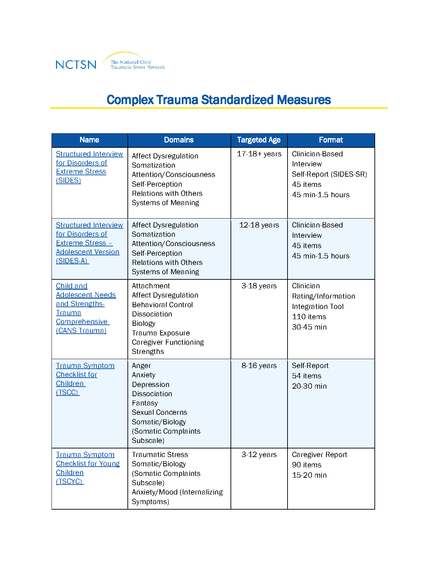Complex Trauma Standardized Measures
recommended
Overview of available standardized measures of Complex <span class="attribute-to-highlight medbox">Trauma</span> on www.nctsn.org | Accessed online February 2019


